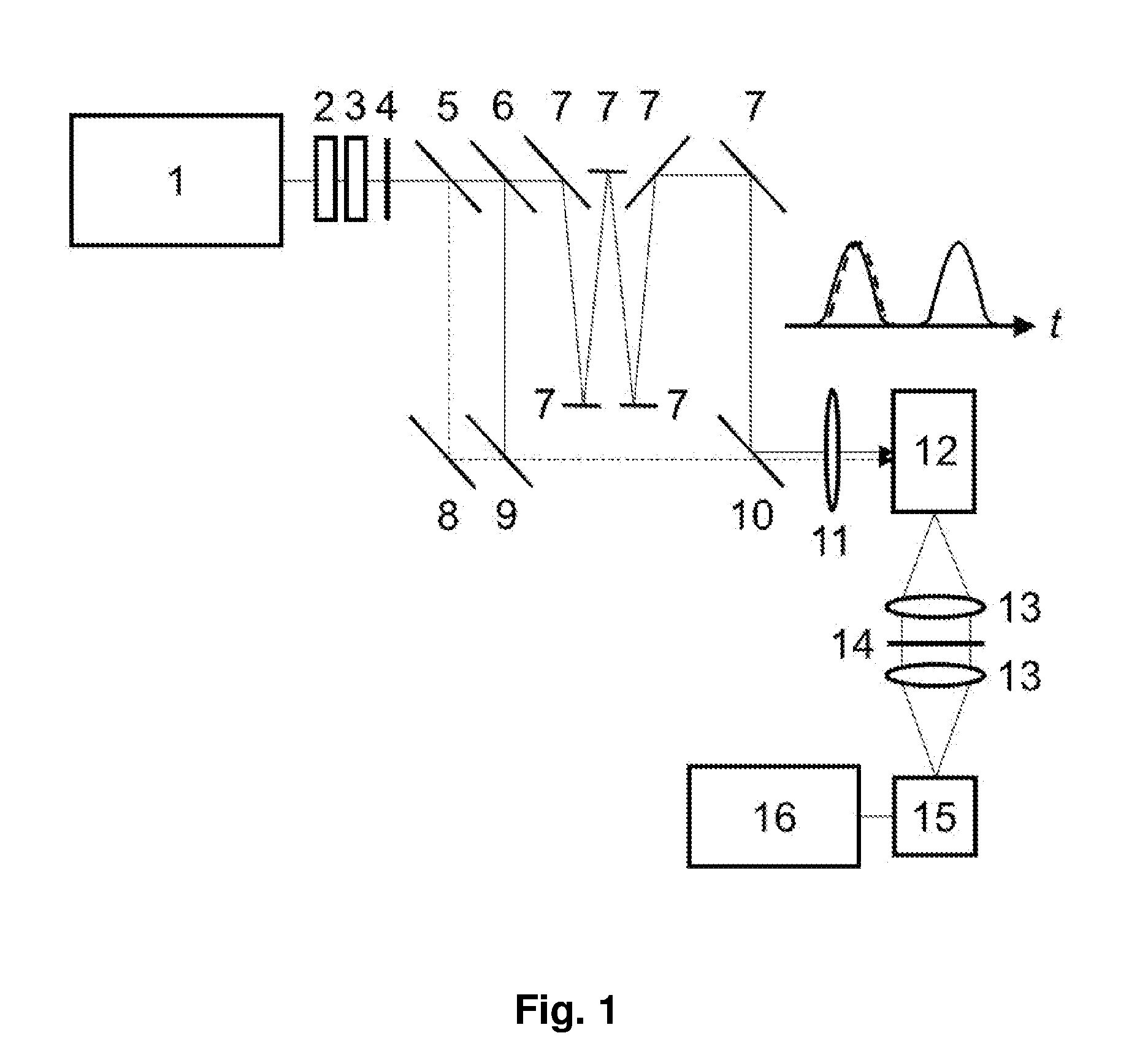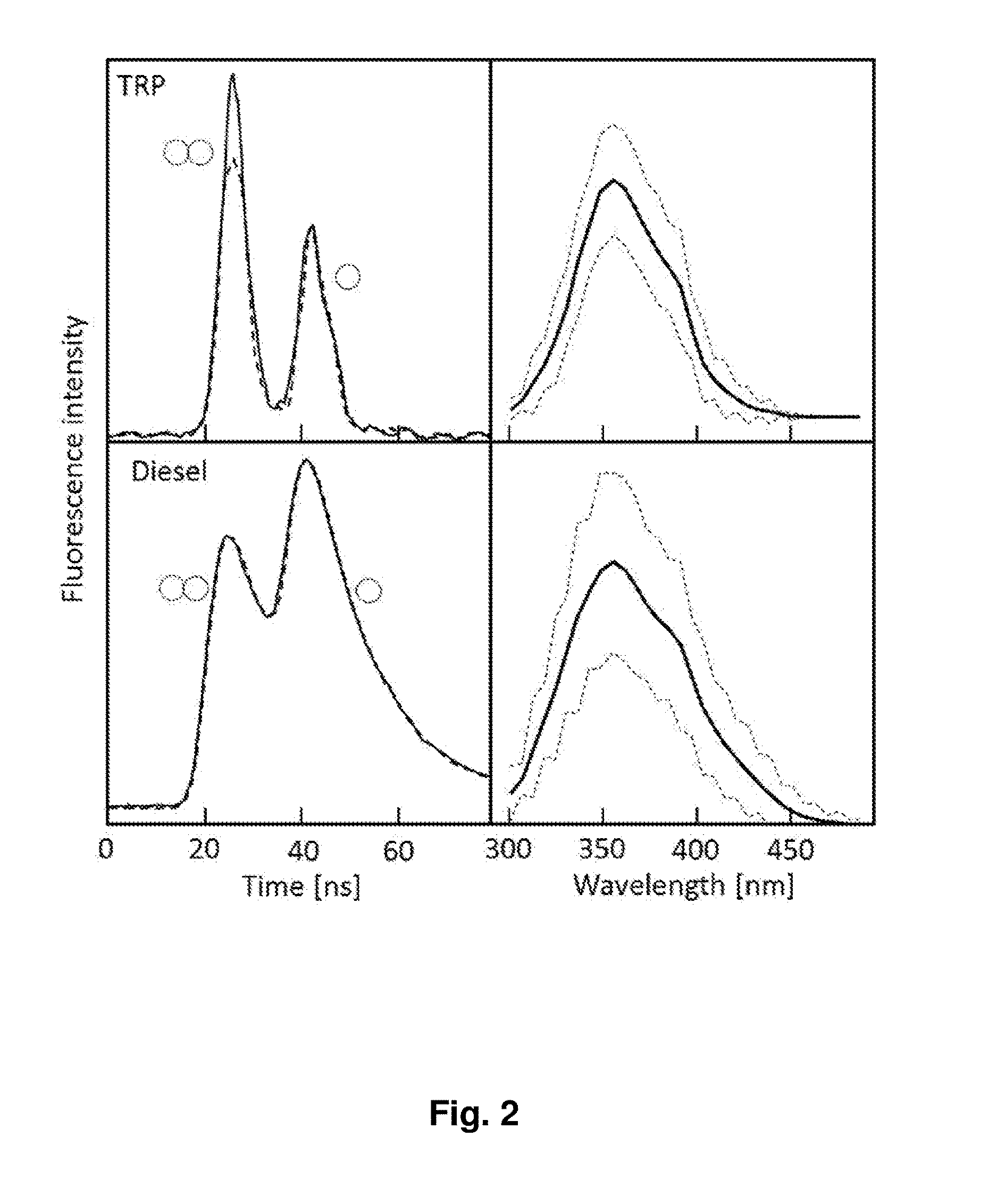Method and apparatus for detecting and discriminating biological from non-biological species
a biological and non-biological technology, applied in the field of sample identification, can solve the problems of sensitive and expensive analyzers for precise lifetime measurements of individual particles containing a mixture of pah, and achieve the effects of less error sources, convenient use, and reduced labor intensity
- Summary
- Abstract
- Description
- Claims
- Application Information
AI Technical Summary
Benefits of technology
Problems solved by technology
Method used
Image
Examples
Embodiment Construction
[0031]FIG. 1 shows a first embodiment, i,e. a first practical implementation of the invention, which is geared to discriminate bioaerosols from non-bioaerosols.
[0032]FIG. 1 is a schematic illustration. Pulse source is a neodymium-doped yttrium lithium fluoride (Nd:YLF) laser 1 whose laser transitions occur at 1053 nm. The output of this laser 1 is frequency-doubled in a nonlinear crystal 2 providing 52 nm radiation (dashed line in the little diagram) and then frequency quadrupled in a second nonlinear crystal 3 providing 263 nm radiation (full line in the little diagram). The UV polarization is set parallel to the visible by a half wave plate 4. The visible radiation is separated by a first dichroic mirror 5, which transmits 263 nm and reflects 527 nm. The UV of 263 nm is split into two arms by a beam splitter 6, i.e. a partially reflective minor with R=50% at 263 nm. Half of the beam is recombined with the visible radiation of 527 nm by a second dichroic mirror 9. The two radiation...
PUM
| Property | Measurement | Unit |
|---|---|---|
| time | aaaaa | aaaaa |
| size | aaaaa | aaaaa |
| width | aaaaa | aaaaa |
Abstract
Description
Claims
Application Information
 Login to View More
Login to View More - R&D
- Intellectual Property
- Life Sciences
- Materials
- Tech Scout
- Unparalleled Data Quality
- Higher Quality Content
- 60% Fewer Hallucinations
Browse by: Latest US Patents, China's latest patents, Technical Efficacy Thesaurus, Application Domain, Technology Topic, Popular Technical Reports.
© 2025 PatSnap. All rights reserved.Legal|Privacy policy|Modern Slavery Act Transparency Statement|Sitemap|About US| Contact US: help@patsnap.com



